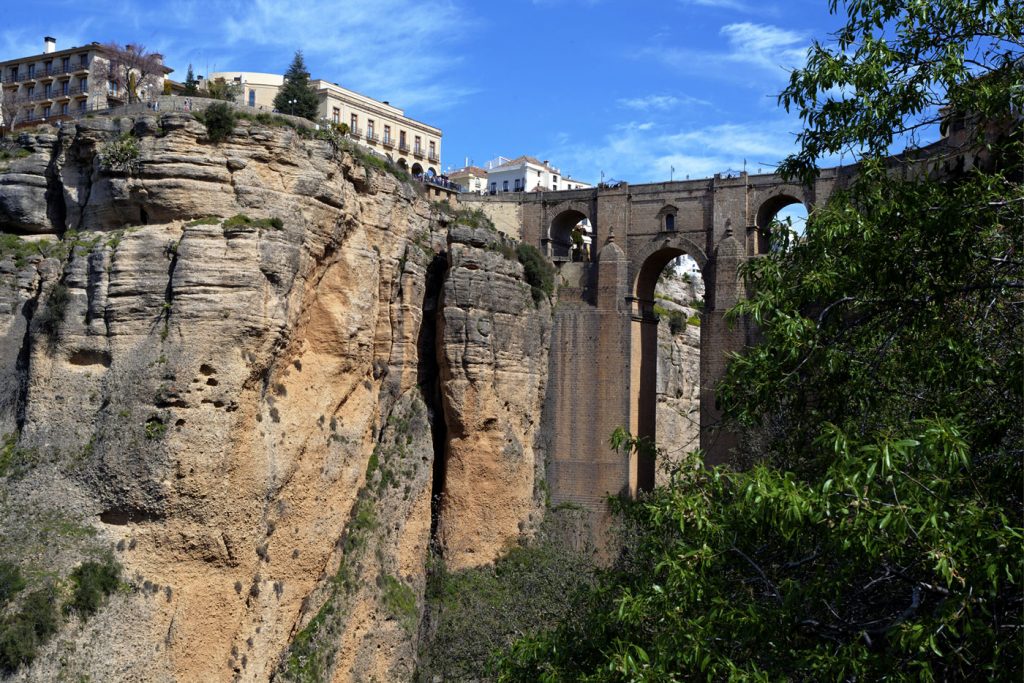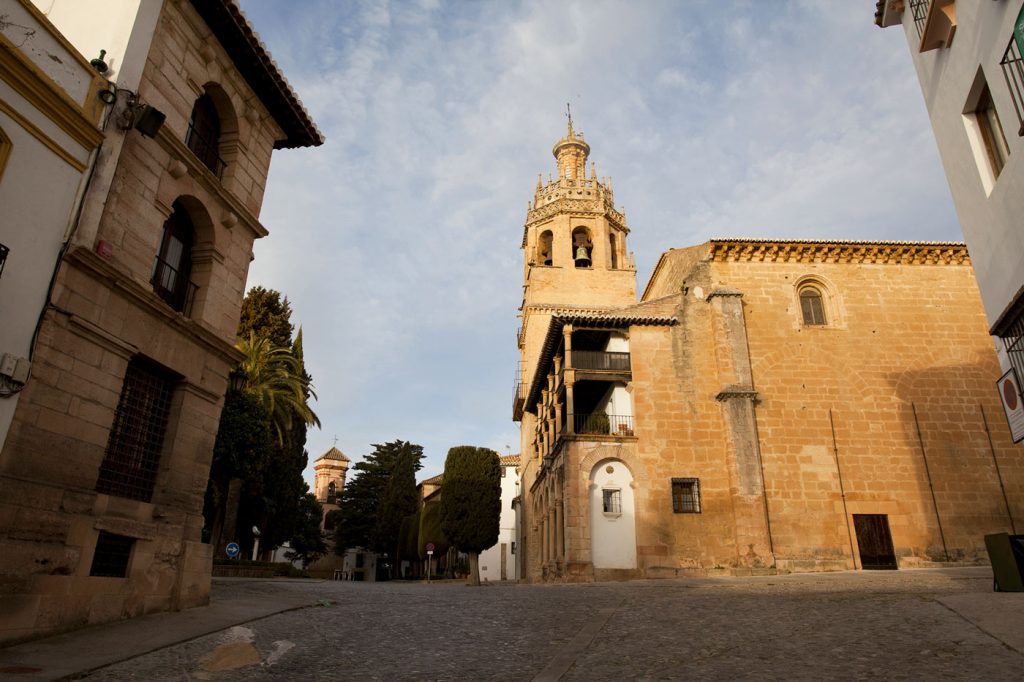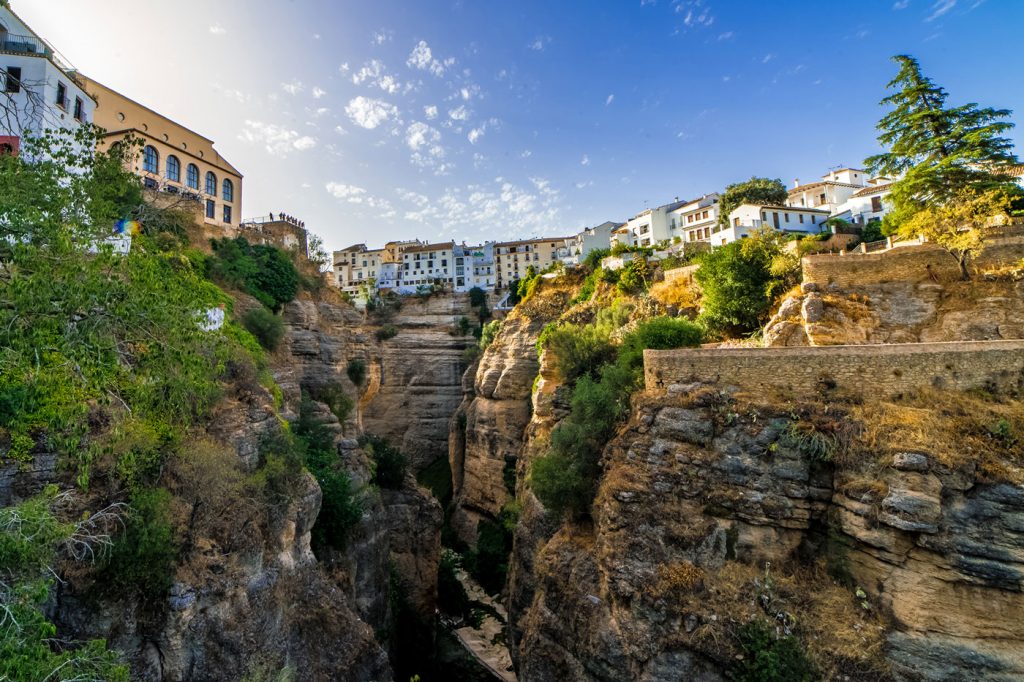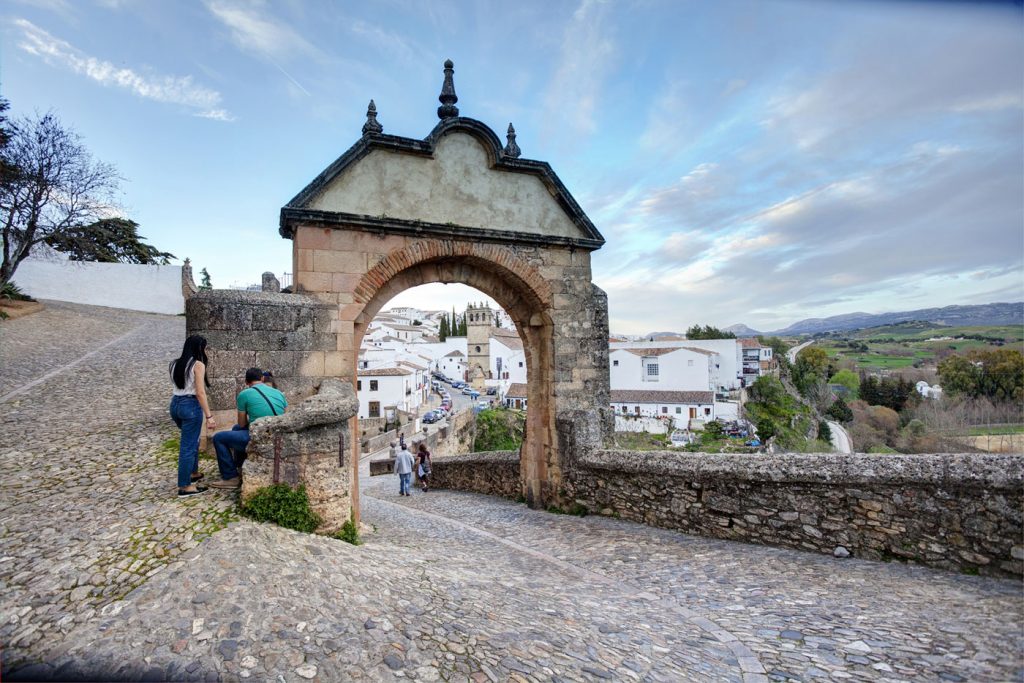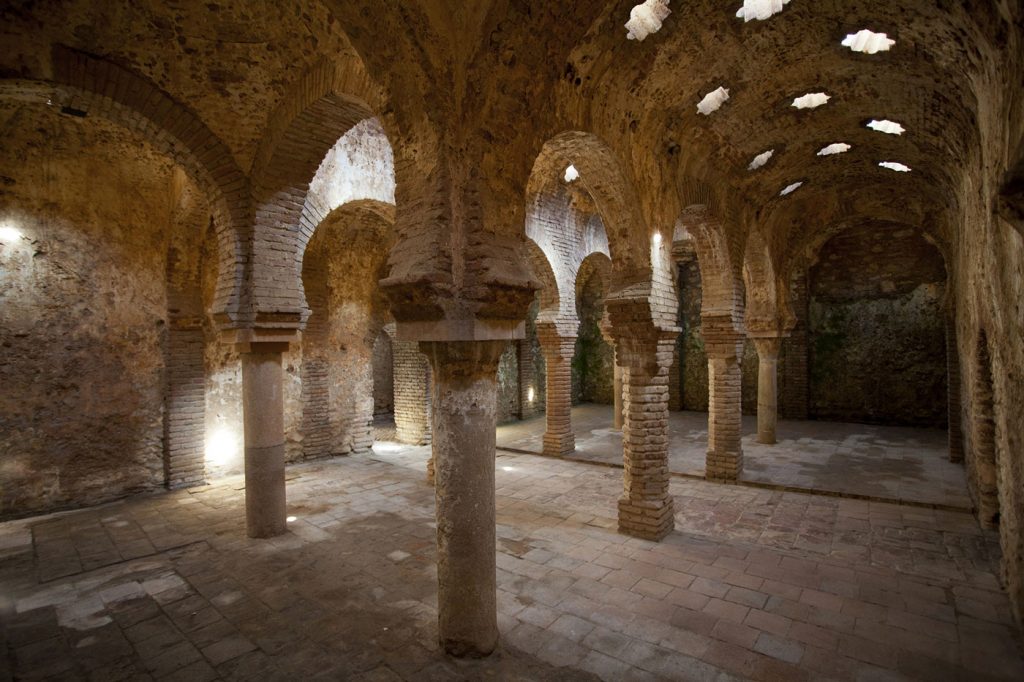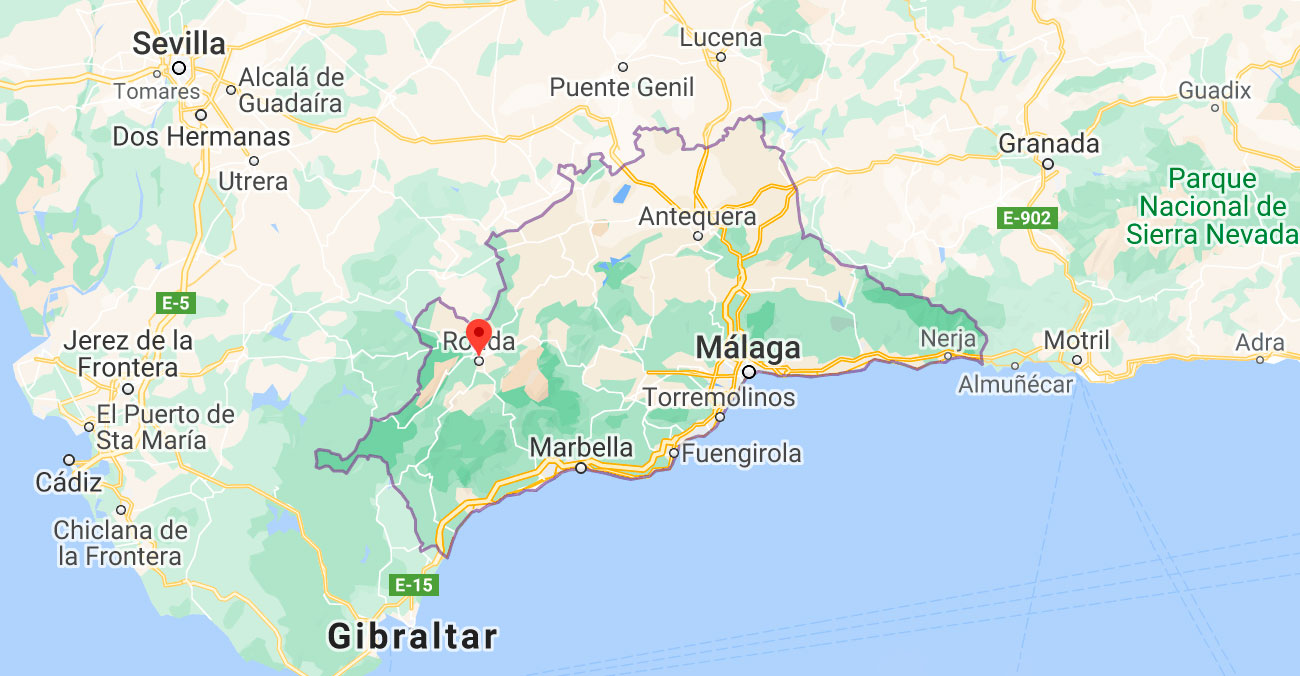History
To talk about Ronda is to talk about unparalleled cultural, natural and landscape resources, wine tourism, oil tourism and gastronomy, charming hotels, Taurus tourism, parties and events of all kinds or sports and leisure activities (hiking, climbing , canyoning, cycle tourism, caving tourism, etc.).
Monuments
Ronda’s architectural heritage is an extensive open-air museum of a multitude of artistic styles and currents. The Mondragón Palace, built in the 14th century and home to the Ronda Museum, the Palace of the Marquis of Salvatierra or the House of San Juan Bosco, in a modernist style, show how different styles combine and dialogue just a few meters away. Of the Arab heritage, the Giant’s House and the Palace of the Moorish King stand out, from which an imposing staircase carved in rock in its gardens leads to the river.
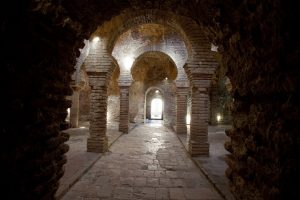 The religious buildings also provide Ronda with high uniqueness. The church of Santa María la Mayor, the church of La Caridad and the convent of Santa Isabel de los Ángeles, or the church of the Holy Spirit and the convent of Santo Domingo, built by the Catholic Monarchs, are some of the monuments that you cannot lose you.
The religious buildings also provide Ronda with high uniqueness. The church of Santa María la Mayor, the church of La Caridad and the convent of Santa Isabel de los Ángeles, or the church of the Holy Spirit and the convent of Santo Domingo, built by the Catholic Monarchs, are some of the monuments that you cannot lose you.
You can continue the visit to the temple of the patron saint, the Sanctuary of the Virgin of Peace, discovering the imposing altarpieces of the church of Santa Cecilia or the convents of the Mother of God and San Francisco. The church of Father Jesús or the temple of the Virgen de los Dolores also deserve special attention. Finally, a surprise for the most devout: in the church of La Merced there is the incorrupt hand of Saint Teresa.
Ronda is a city that bears the weight of centuries and civilizations preserves vestiges of almost all of them. Like the Roman one, which left us the very interesting Acinipo theater, which preserves all the functional areas of a Roman theater, or the Andalusian one, with the best preserved Arab Baths in Spain and the Puerta de Almocábar.
Whether you come during the holidays or not, you cannot leave Ronda without visiting its 18th-century and monumental Plaza de Toros and the Museo de la Real Maestranza de Caballería de Ronda.
Ronda also has an interesting museum proposal that offers an interesting historical and artistic look at the city. Some of the most notable are the Municipal Museum of Ronda, the Lara Museum of Antiquities or the Museum dedicated to the painter of Ronda origin Joaquín Peinado, located in the Palace of the Marquises of Moctezuma.

